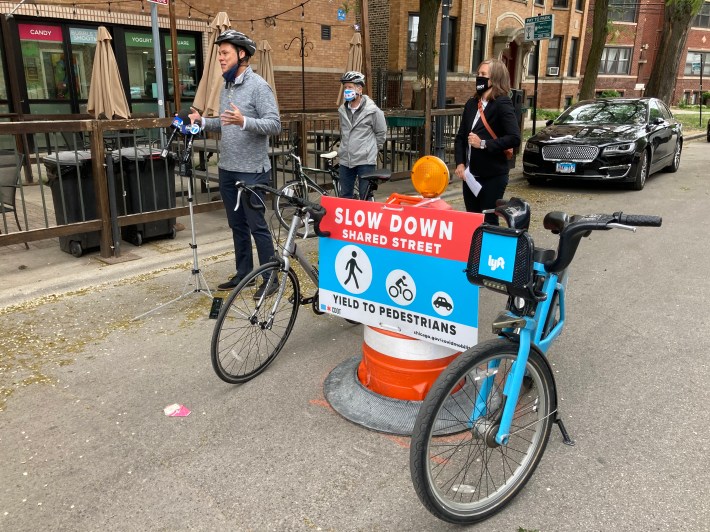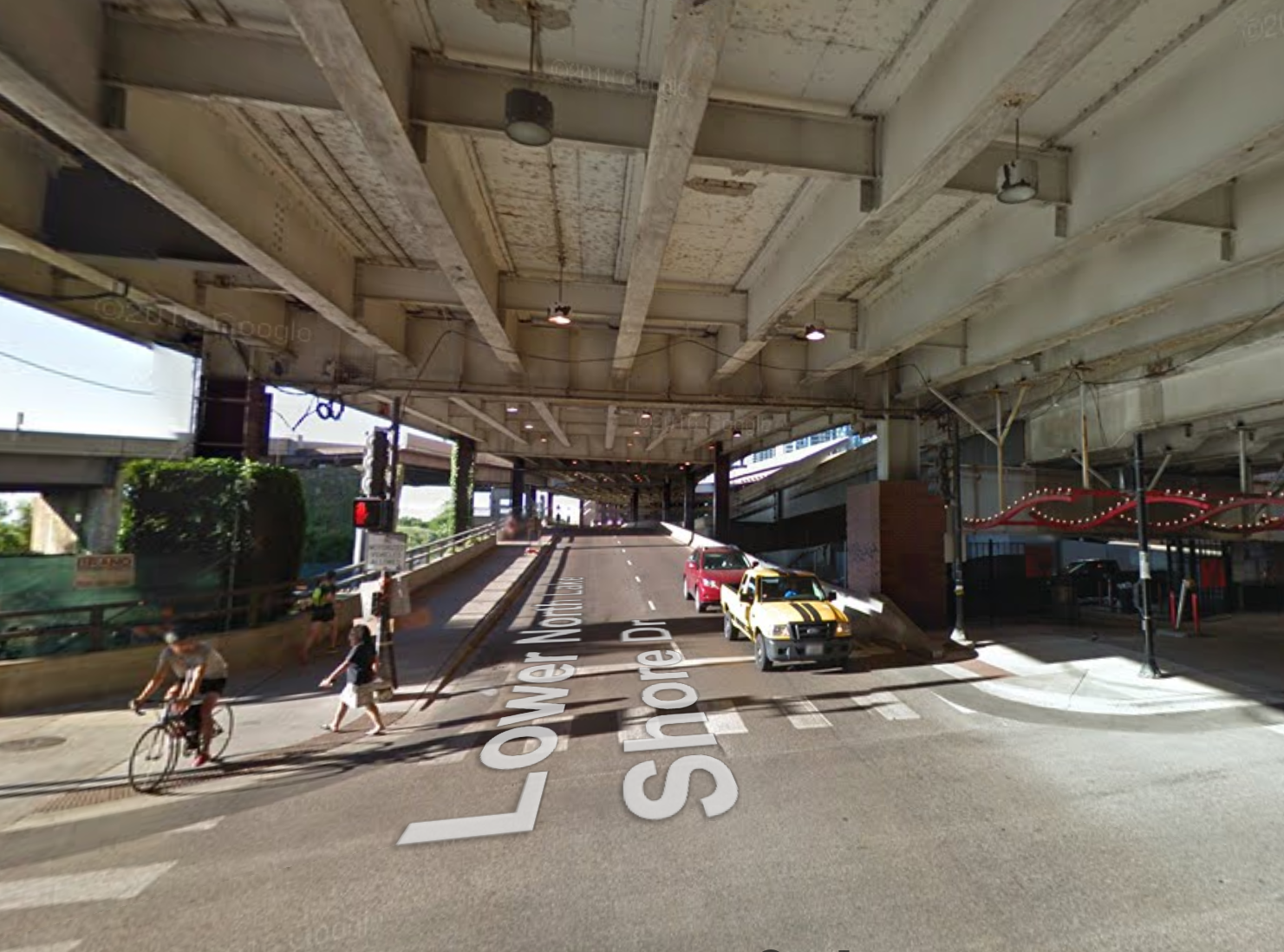Earlier this week, after the Chicago Department of Transportation announced that the Navy Pier Flyover completion will be delayed by another six months, to mid-2019. In response, the Active Transportation Alliance called on CDOT to convert the lane of Lower Lake Shore Drive nearest to the Lakefront Trail to a temporary bike/ped path, separated from traffic by a physical barrier. Streetsblog’s Steven Vance proposed this quick, relatively low-cost idea as an alternative to the $60 million-plus flyover back in 2012.
Yesterday CDOT spokesman Mike Claffey clarified that the department is actually planning on doing this, closing the easternmost northbound lane of Lower LSD in order to accommodate foot and bike traffic while a segment of the Lakefront Trail is closed for Phase III of construction. This stage of the project, which involves building a new wider, cantilevered trail across the Chicago River, is currently slated to begin in spring 2018.

Claffey noted that the average annual daily traffic on this stretch of northbound and southbound Lower LSD is about 11,800 motor vehicle trips for each direction. This suggests that closing one of four the lanes for the temporary path isn’t going to cause congestion problems for drivers.
South of Grand Avenue, the path currently exists as relatively narrow sidewalk with several tight bottlenecks, so the on-street detour will represent a significant improvement. That begs the question, why not create this wider on-street path immediately, instead of making pedestrians and cyclists wait several more months until Phase III starts?




